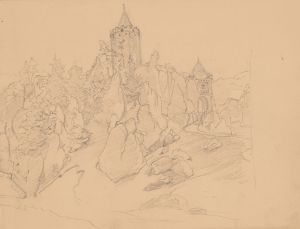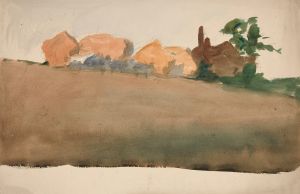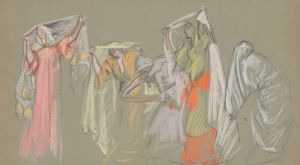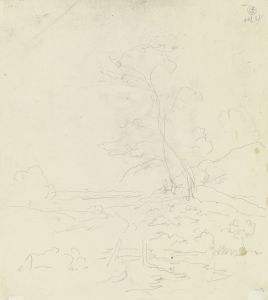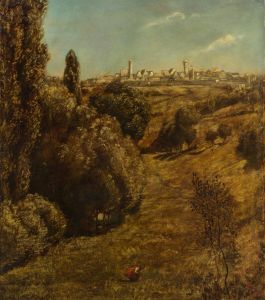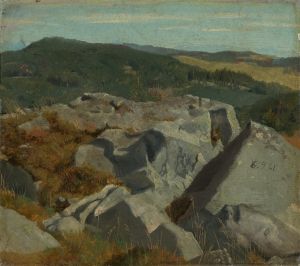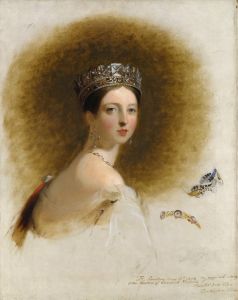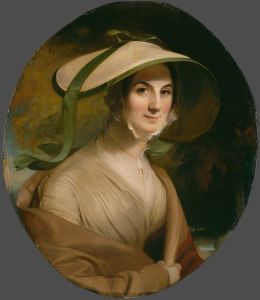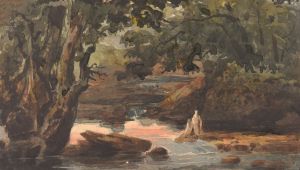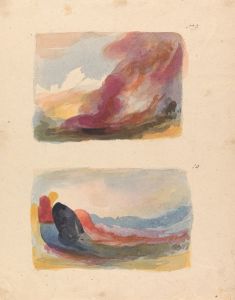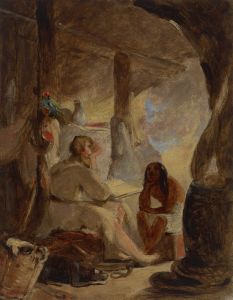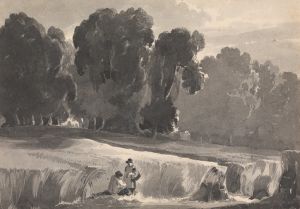
Landscape with Castle – Modern Manner ; Landscape with Figures in Foreground
A hand-painted replica of Thomas Sully’s masterpiece Landscape with Castle – Modern Manner ; Landscape with Figures in Foreground, meticulously crafted by professional artists to capture the true essence of the original. Each piece is created with museum-quality canvas and rare mineral pigments, carefully painted by experienced artists with delicate brushstrokes and rich, layered colors to perfectly recreate the texture of the original artwork. Unlike machine-printed reproductions, this hand-painted version brings the painting to life, infused with the artist’s emotions and skill in every stroke. Whether for personal collection or home decoration, it instantly elevates the artistic atmosphere of any space.
Thomas Sully, an American portrait painter born in 1783, is primarily known for his portraits of prominent Americans and his contribution to the arts in the early 19th century. However, his oeuvre also includes a variety of other subjects, including landscapes. One such work attributed to him is "Landscape with Castle – Modern Manner; Landscape with Figures in Foreground." This painting reflects Sully's versatility and his ability to capture different themes beyond portraiture.
Sully was born in England and moved to the United States with his family in 1792. He began his artistic career in Charleston, South Carolina, and later moved to Philadelphia, where he spent most of his life. Philadelphia was a thriving cultural center at the time, and Sully became one of the city's most prominent artists. He was influenced by the European masters and made several trips to England to study their works, which significantly impacted his style.
"Landscape with Castle – Modern Manner; Landscape with Figures in Foreground" is an example of Sully's exploration into landscape painting, a genre that was gaining popularity in America during his lifetime. Although Sully is not primarily known for landscapes, this work demonstrates his ability to incorporate elements of the Romantic style, which was characterized by an emphasis on emotion and nature's sublime beauty. The painting features a castle, a common motif in Romantic art, symbolizing history and the passage of time. The inclusion of figures in the foreground adds a narrative element, inviting viewers to ponder the relationship between humans and their environment.
The composition of the painting reflects Sully's understanding of balance and perspective, likely influenced by his studies of European art. The castle, positioned prominently in the background, serves as a focal point, while the figures in the foreground provide a sense of scale and depth. The use of light and shadow in the painting suggests a particular time of day, adding to the atmospheric quality of the scene.
Sully's landscapes, though less numerous than his portraits, reveal his interest in capturing the natural world and experimenting with different artistic styles. His ability to adapt and explore various subjects is a testament to his skill and creativity as an artist. While "Landscape with Castle – Modern Manner; Landscape with Figures in Foreground" may not be as widely recognized as his portraits, it contributes to the understanding of Sully's artistic range and the broader context of American art during the early 19th century.
In summary, Thomas Sully's "Landscape with Castle – Modern Manner; Landscape with Figures in Foreground" showcases the artist's foray into landscape painting, reflecting the Romantic influences of the time. Although primarily celebrated for his portraits, Sully's landscapes offer insight into his versatility and the evolving art scene in America. This work, with its blend of natural beauty and historical elements, exemplifies the themes and styles that captivated artists and audiences during Sully's era.






